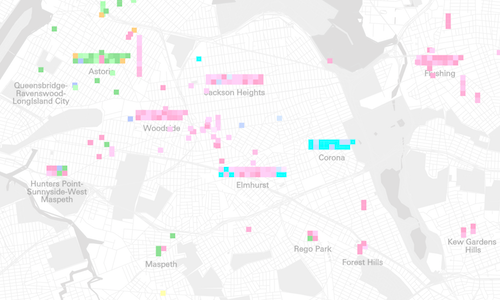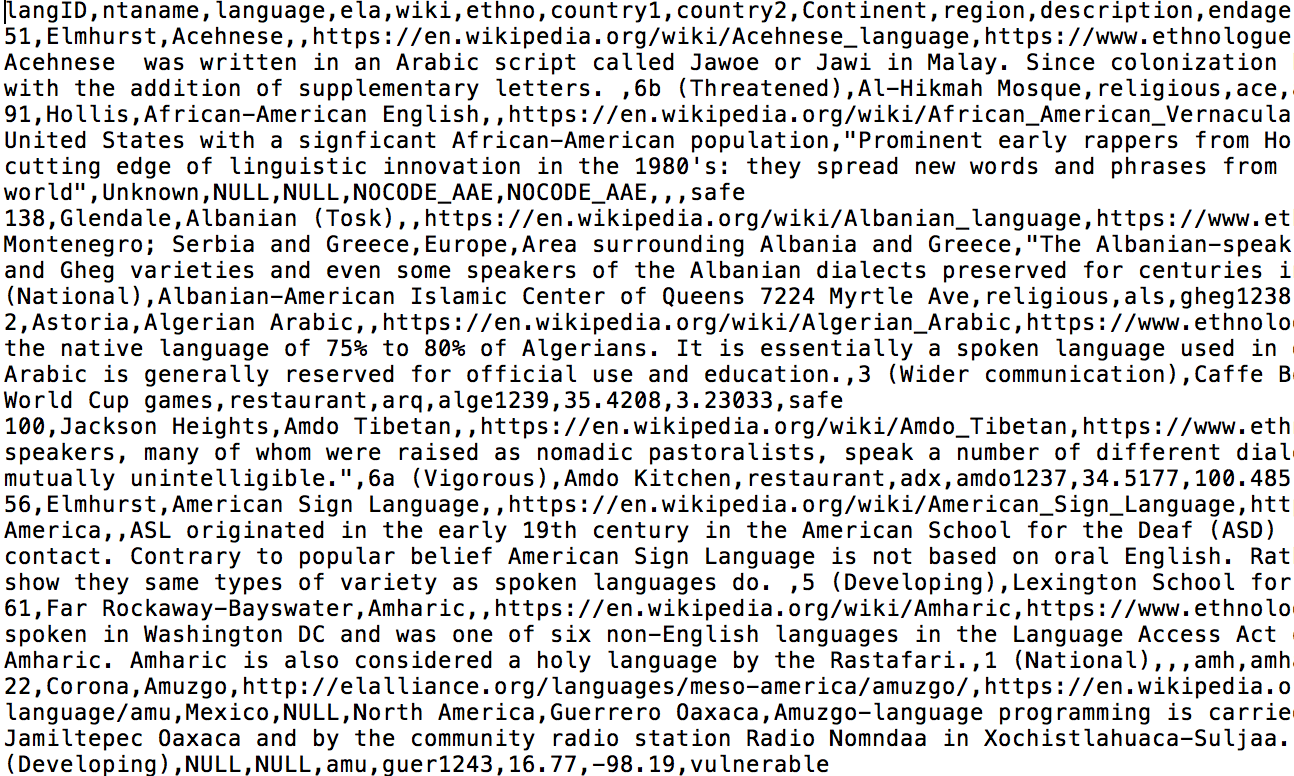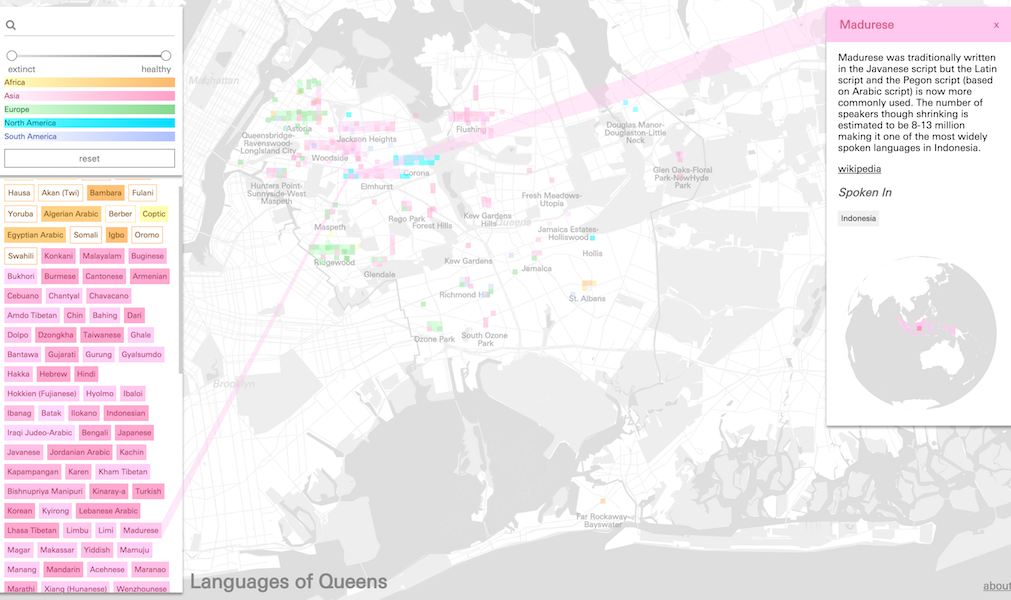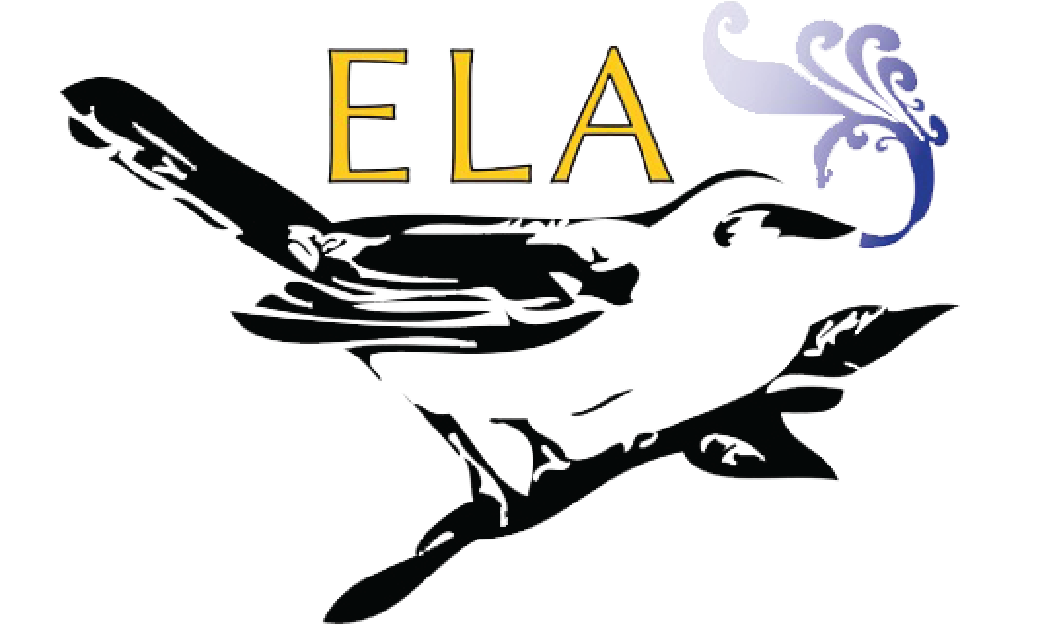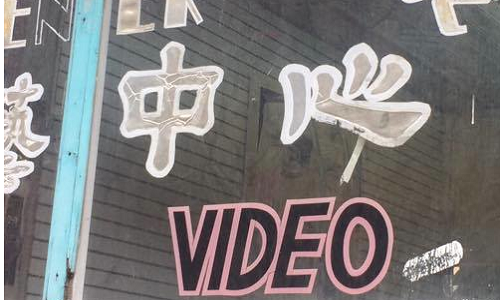Conflict Urbanism: Language Ecologies explores the role that language plays in shaping urban space. Language interacts with its environment at multiple scales and with diverse media. As an ecology, language either dominates, or is vulnerable to its host environments. In this way it often makes conflict visible in urban settings.
Language works in extraordinary ways – multilingualism can divide a local community and simultaneously connect a global community. Language also works in the most ordinary ways – it mediates nearly every human interaction, from fulfilling the most basic needs to communicating the most abstract ideas.
We have collaborated with the Endangered Language Alliance to build a map which visualizes the incredible diversity of languages spoken in New York City focusing on the most vulnerable languages. We have also worked on a series of case studies about language in New York City. Our research shows that typical maps represent monolingualism very well, drawing boundaries around ethnolinguistic groups; but language ecology, especially in urban areas, is one of both community as well as individual multilingualism. Each case study seeks to address this by taking innovative and sometimes radical approaches to represent the diversity of languages spoken in New York City. Though the projects focus on New York, the methods of visualization and inquiry extend easily to other multilingual, multinational spaces.
Language works in extraordinary ways – multilingualism can divide a local community and simultaneously connect a global community. Language also works in the most ordinary ways – it mediates nearly every human interaction, from fulfilling the most basic needs to communicating the most abstract ideas.
We have collaborated with the Endangered Language Alliance to build a map which visualizes the incredible diversity of languages spoken in New York City focusing on the most vulnerable languages. We have also worked on a series of case studies about language in New York City. Our research shows that typical maps represent monolingualism very well, drawing boundaries around ethnolinguistic groups; but language ecology, especially in urban areas, is one of both community as well as individual multilingualism. Each case study seeks to address this by taking innovative and sometimes radical approaches to represent the diversity of languages spoken in New York City. Though the projects focus on New York, the methods of visualization and inquiry extend easily to other multilingual, multinational spaces.
Faculty
| Name | Project role | Title | |
|---|---|---|---|
| Laura Kurgan | Principal Investigator | Graduate School of Architecture, Planning and Preservation | ljk33@columbia.edu |
| Michelle McSweeney | Project Lead | Graduate School of Architecture, Planning and Preservation | mam2518@columbia.edu |
| Rachel Fifi-Culp | Research Assistant | Columbia College | |
| Tola Oniyangi | Research Assistant | Graduate School of Architecture, Planning and Preservation | |
| Carsten Rodin | Research Assistant | Graduate School of Architecture, Planning and Preservation |
